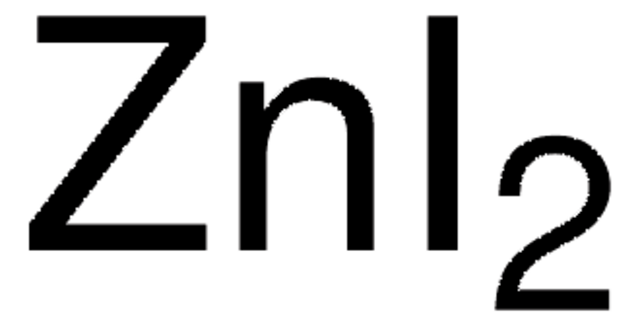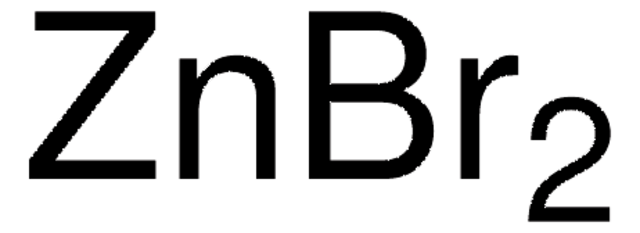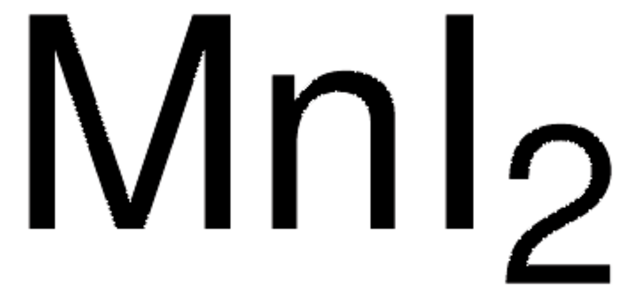230014
Zinc iodide
≥99.99% trace metals basis
Sinônimo(s):
Diiodozinc, Zinc diiodide
About This Item
Produtos recomendados
grau
for analytical purposes
Ensaio
≥99.99% trace metals basis
Formulário
crystalline
adequação da reação
reagent type: catalyst
core: zinc
Impurezas
≤100.0 ppm Trace Metal Analysis
pf
445 °C (lit.)
densidade
4.74 g/mL at 25 °C (lit.)
cadeia de caracteres SMILES
I[Zn]I
InChI
1S/2HI.Zn/h2*1H;/q;;+2/p-2
chave InChI
UAYWVJHJZHQCIE-UHFFFAOYSA-L
Procurando produtos similares? Visita Guia de comparação de produtos
Descrição geral
Aplicação
- An electrolyte in Zinc-iodine redox flow batteries.
- An additive to prepare air-stable cationic lead perovskite films. The addition of ZnI2 enhances the film stability and photoluminescence without affecting the bandgap.
- As a precursor to prepare efficient, eco-friendly, and high color purity inkjet-printed blue InP/ZnS/ZnS quantum dot light-emitting diodes.
- A catalyst in promoting various chemical transformations, for example, in the direct synthesis of 2,3-Dihydroisoxazoles via a [3+2] cycloaddition reaction of the nitrones and terminal alkynes.
- An activator/initiator in living cationic polymerization reactions.
Palavra indicadora
Warning
Frases de perigo
Declarações de precaução
Classificações de perigo
Aquatic Acute 1 - Aquatic Chronic 1 - Eye Irrit. 2 - Skin Irrit. 2 - STOT RE 2 Oral
Órgãos-alvo
Thyroid
Código de classe de armazenamento
13 - Non Combustible Solids
Classe de risco de água (WGK)
WGK 3
Ponto de fulgor (°F)
Not applicable
Ponto de fulgor (°C)
Not applicable
Equipamento de proteção individual
Eyeshields, Faceshields, Gloves, type P3 (EN 143) respirator cartridges
Escolha uma das versões mais recentes:
Já possui este produto?
Encontre a documentação dos produtos que você adquiriu recentemente na biblioteca de documentos.
Os clientes também visualizaram
Nossa equipe de cientistas tem experiência em todas as áreas de pesquisa, incluindo Life Sciences, ciência de materiais, síntese química, cromatografia, química analítica e muitas outras.
Entre em contato com a assistência técnica












